Last Chance to Catch NYC's Holiday Notalgia Train
We met the voices of the NYC subway on our nostalgia ride this weekend!


In perhaps a fitting end to the long drama surrounding the lease of the former Aces & Eights Saloon (formerly Mo’ Pitkins) at 34 Avenue A in the East Village, the space will be filled by something probably no one expected: a social club for dogs. Ruff Club, owned by Danny Frost and Alexia Simon, was one of few potential tenants palatable to the community, which has vehemently pushed back on the incursion of both chain stores and boozy bars. Community Board 3 denied at least three applications for 34 Avenue A this year, amidst heated debate in public sessions.

Fortunately for local residents and preservationists, Danny and Alexia, who live ten minutes walking from the Ruff Club, seem as fascinated by the rich history of the building as by the prospect of running a place that serves the local community. When I visited the space, which is currently under construction, Danny excitedly recounted his search to find information about 34 Avenue A and showed me where I could see remnants of the past, of which they plan to keep as part of the heritage of the place.
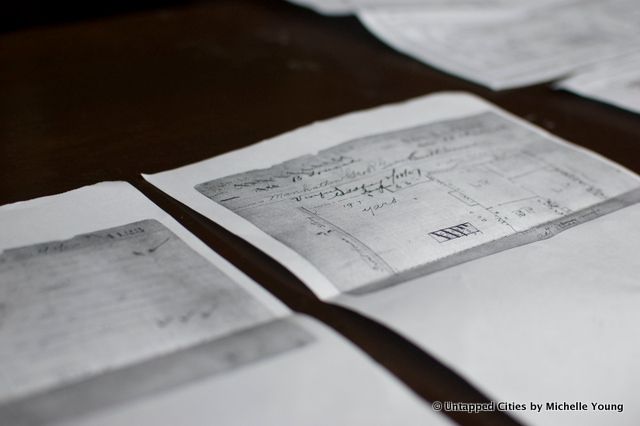
Floor plan from 1902

Floor plan for the Ruff Club
Danny told me, “I’ve reviewed everything available online through Department of City Planning, Department of Buildings, Finance/ACRIS, et cetera, and can’t find the actual building date beyond 1900 as estimated on the city’s GIS map.” They’ve been told that the building is 19th century. A floorplan from New York City’s Housing Preservation & Development from 1902 shows that there was originally a yard in the back, and at some point it was possibly used as a school. Knowing my penchant for digging up information based on engravings, such as the brick in Jane Jacobs’ house in the West Village, Danny gave me a challenge.
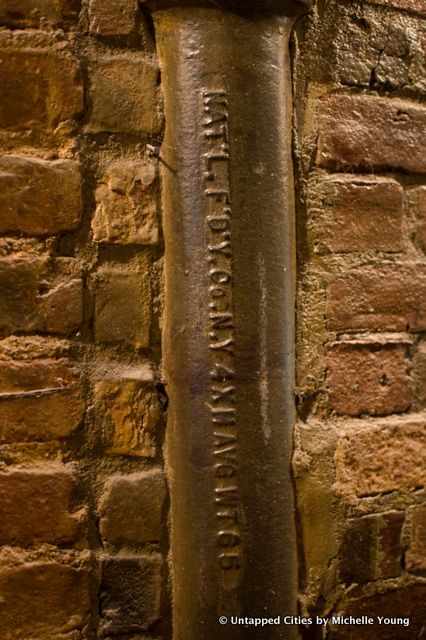
A pipe on the first floor was engraved with “NAT’L. F’D’Y Co. N.Y.”, a cast iron foundry operating in the early 20th century until it filed for bankruptcy in 1955. The owner of the National Foundry, Max Niman, has an American rags to riches story, rising from illiterate Lithuanian immigrant to junk seller. During WWI, his newly formed iron company profited from the demand of scrap metal, from which he purchased the bankrupt National Foundry after the war. The Brooklyn-based company would supply cast iron sewer pipes in the New York’s era of city building during the Gilded Age.

A pump in the basement of 34 Avenue A was engraved with “FEDERAL PUMP CORP. BROOKLYN, NY.” Unlike the National Foundry, Federal Pump Corporation is still in operation. The company was founded in 1927, so the pipes in the basement would have been installed after that date. Both items tell us that the sewage system was likely installed in the 1920s but doesn’t give clues to anything prior.
As for the new Ruff Club itself, the front half will be a place where dogs and their human friends can hang out. The ornate bar will be left intact, although they won’t be serving alcohol of course. Owners will be encouraged to socialize or catch up on work–WiFi will be available. The back half of the first floor will be exclusive to dogs only and the exposed brick walls will remain. Members can watch their dogs on a dog-cam from any device. The basement will be used for grooming and offices. One can only hope that the Big Buck Hunter may stay as well as a throwback to the classy joint’s illustrious history. Aces & Eights was called an “apologetic frat trap” by New York Magazine, and The Village Voice described Mo’ Pitkins as rife with performance artists, burlesque dancers, and manischevitinis.


Light fixtures in the basement
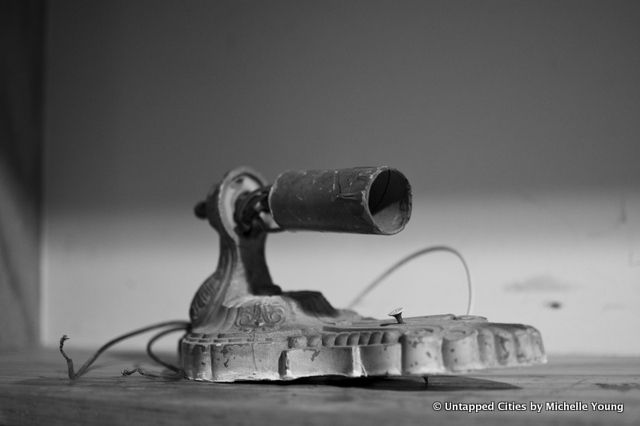
Another light fixture
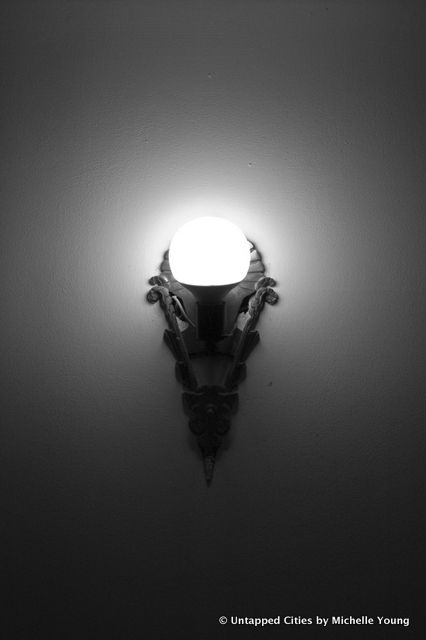
Regarding the interior design, Thomas A. Scibilia, AIA, the architect from Strata Architecture+Design working on the Ruff Club told us:
The East Village as well as the previous venues that once occupied this building sought to attract the unique and diverse; these traits can also be seen in the residual design elements and unique character of the interior space. It’s the elements of wood wainscot walls, exposed brick, oak bar, and tin ceilings that the owners and architects plan to keep in-place that makes this space unique. A sense of leftover history to be incorporated into new story. In today’s world everyone mainly concentrates on making a space new and modern by removing the entire space back to the bones of the building and starting new. In this space we’ll keep the history and the unique character from the former era and incorporate it into the needs for today.
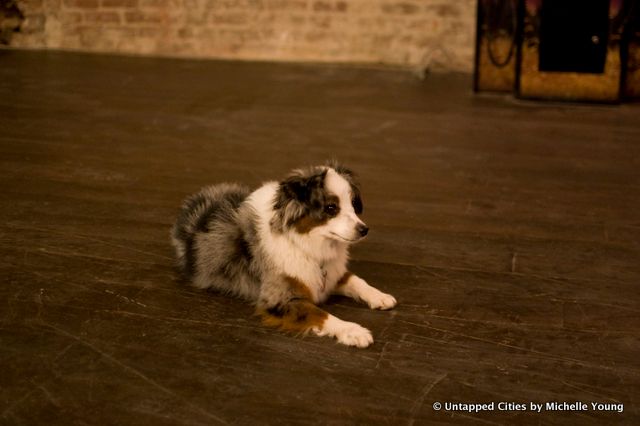
Leo, getting acclimated to his new home
Find out more about Ruff Club, to be located on 34 Avenue A between 2nd and 3rd Street, on their website.
Get in touch with the author @untappedmich.
Subscribe to our newsletter